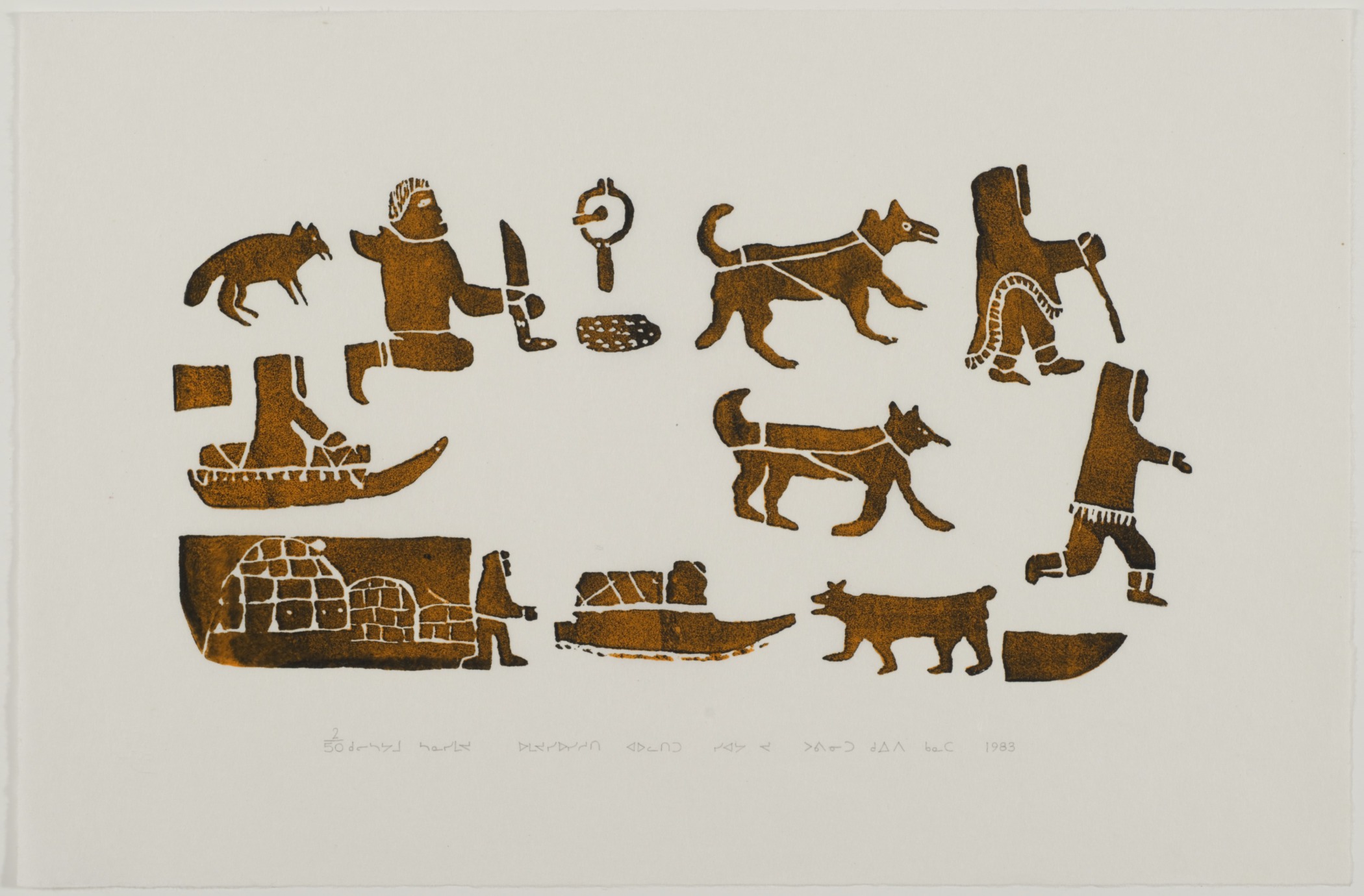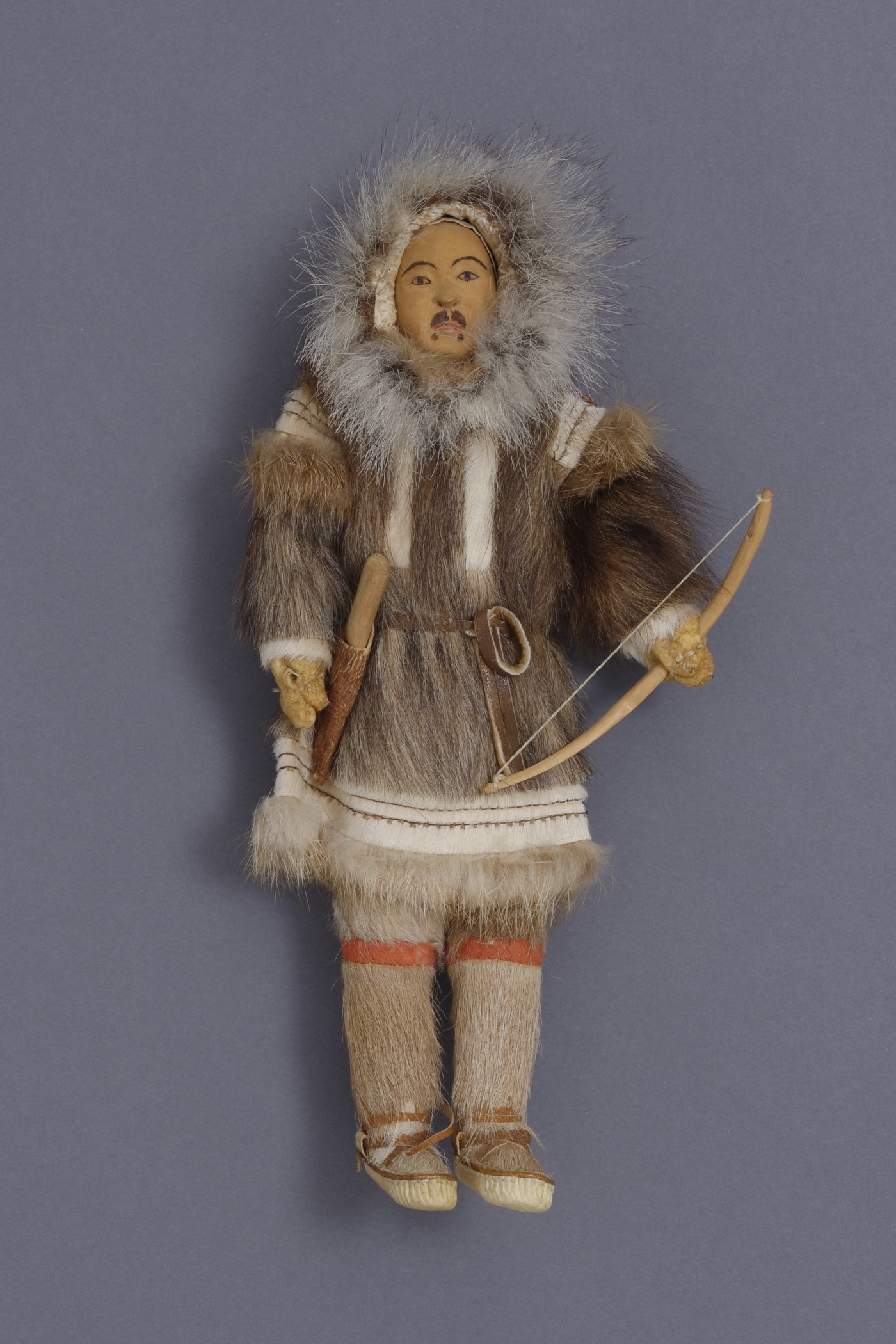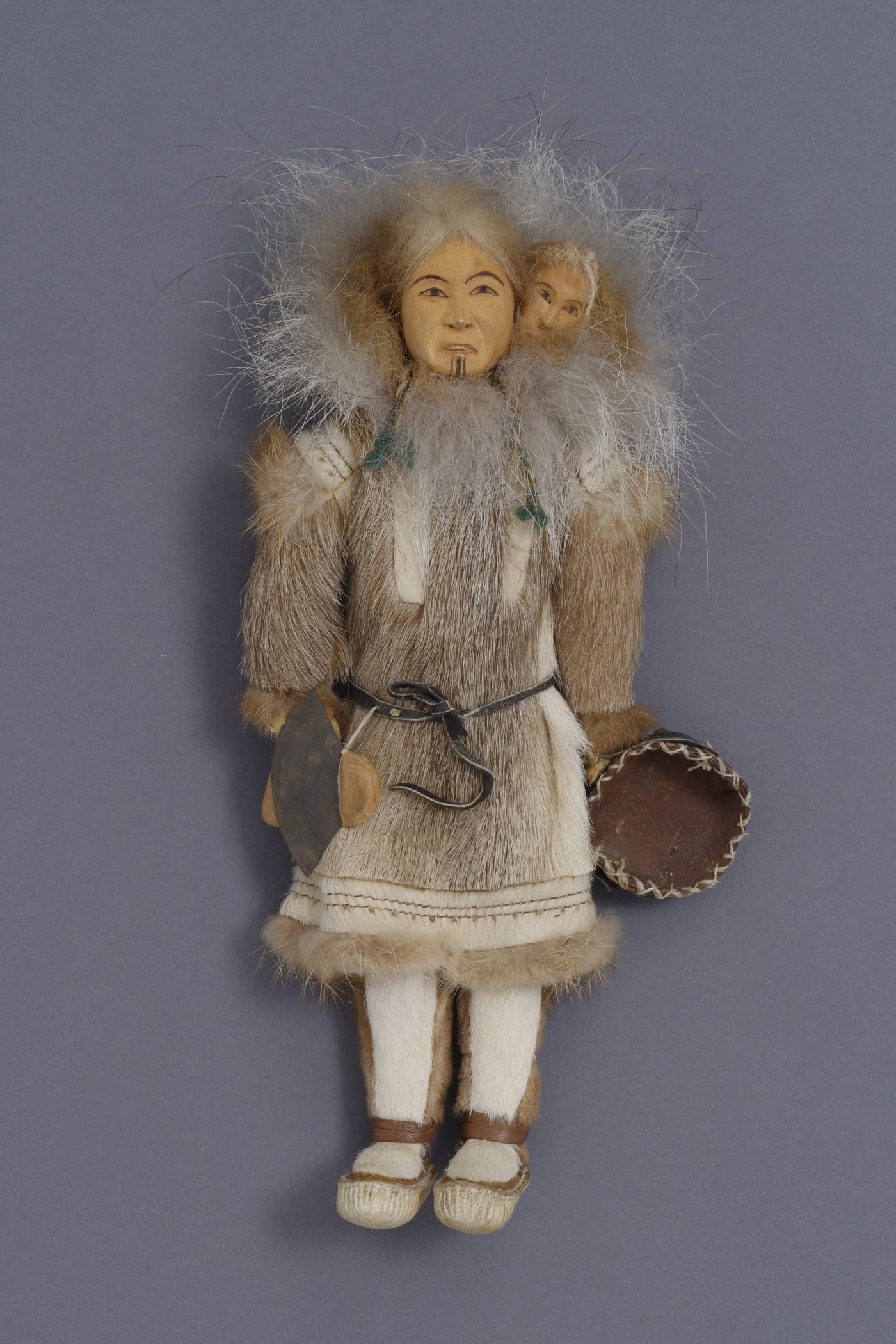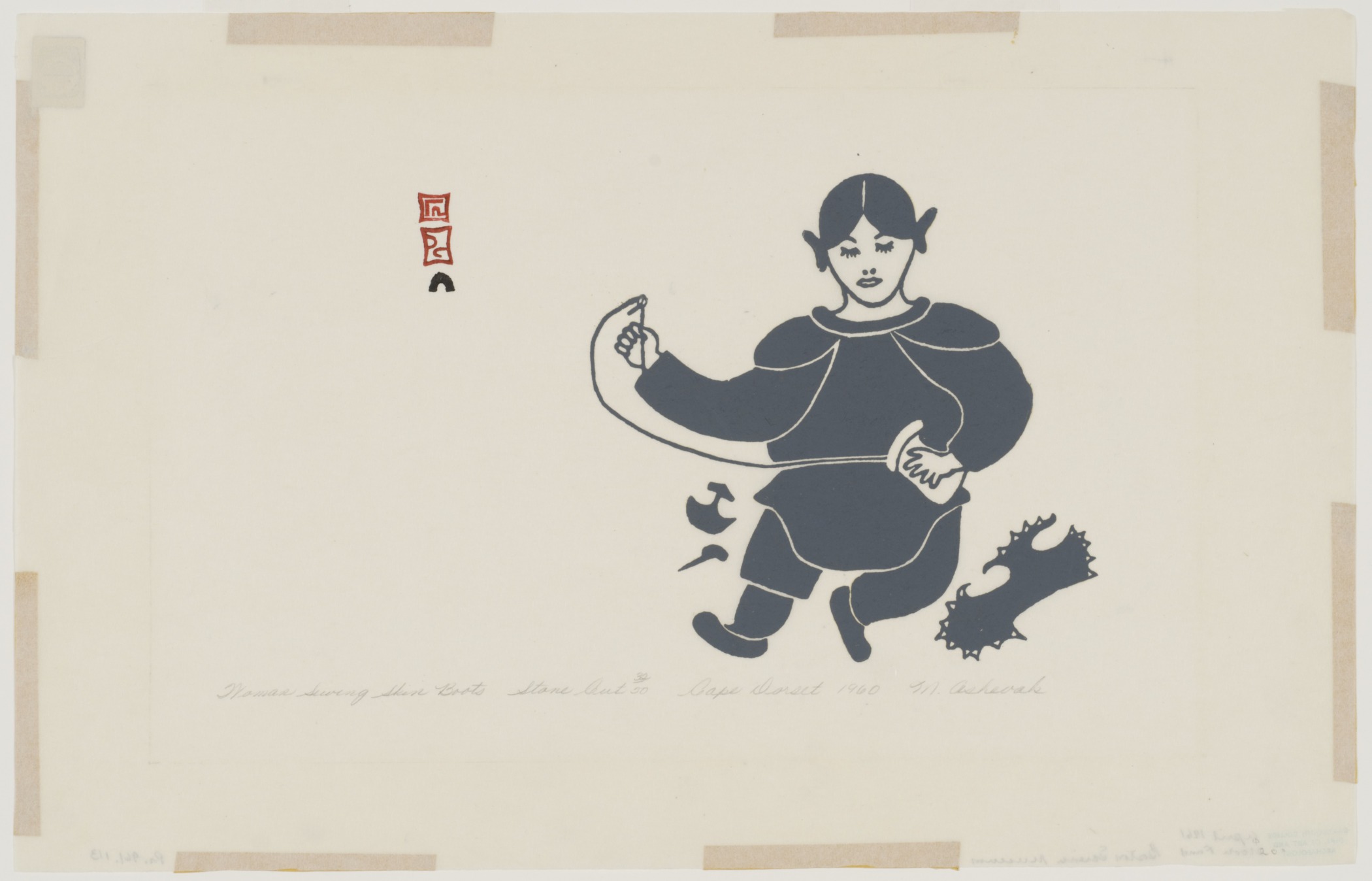Effie Richards, American (Iñupiaq), born 1893
Doll representing an Iñupiaq woman carrying a child on her back, holding an ulu and dish
- Collected by 1954
- Wood, fur, and hide
Hood Museum of Art, Dartmouth College: The Wellington Indian Doll Collection, Gift of Barbara Wellington Wells; 987.35.26717
visibilityLook & DiscussAlthough this doll was made for sale, girls often received dolls and miniature tools to play with to encourage them to prepare for their roles as adults.
explore the object
This doll is wearing the traditional winter dress of an Iñupiaq woman: boots, leggings, mittens, and a special parka with a large hood known as an amauti. Historically, women carried babies in the hoods of their amauti until the babies were about two years old. A strap inside wrapped around the mother’s waist and under the baby’s bottom to hold the child in place. The child would wear a soft caribou skin stuffed with moss as a diaper. He or she could easily be switched from back to front for breastfeeding.
The doll’s clothing is made of a variety of furs and hide. Effie Richards made the clothing beautiful by varying the colors of the fur to create patterns in the parka, embellishing the hem and shoulder panels with fabric trim, and trimming the tops of the boots with red flannel. The parka is probably made of caribou hide. The white fur came from the underbelly of the caribou, and the darker fur from the upper part of the body. (See Clothing and Regalia to view similar forms of winter clothing.)
Iñupiaq, one of two miniature ulus, possibly for a doll, collected 1948–57. Aluminum and wood, 1 1/4 in. Hood Museum of Art, Dartmouth College: Gift of Sally Carrighar; 166.43.16174.
She carries a bowl in one hand and has an ulu, the woman’s knife, a tool with a semi-circular blade for skinning animals and preparing hides, attached to her belt. A little girl might use this doll to pretend to care for a child, or to practice preparing food, hides, or clothing.
The doll’s head is made of wood. It has a delicately drawn, realistic face. Her chin has been tattooed with three vertical lines, a common style among the Iñupiaq and many other cultures in the Arctic. This traditional practice dates back centuries but was banned by 19th- and 20th-century missionaries. It is now coming back with younger generations across the Arctic.
Meet the Artist
Effie Richards was a skilled “skin sewer,” who along with her sister, Ethel Washington, used her talents to make and sell dolls. Washington popularized a type of doll known as a “portrait-style” doll. She carved the heads of her dolls out of wood collected from the nearby Kobuk River, adding realistic faces. In this, she broke with tradition, because carving was traditionally male work. Washington was the first doll maker whose name became known to non-indigenous buyers. Her success in the 1950s inspired other doll makers in the settlement of Kozebue, including her sister, Effie. These examples made by Effie Richards embody many elements of Washington’s dolls, including the types of accessories Richards added: a bow and a sheathed knife for the male doll, and a bowl and ulu for the female doll.
learn more
For an excellent teacher resource on Native American dolls, access the Fall 2004 issue of Smithsonian in Your Classroom by the The National Museum of the American Indian.
Search the Hood’s Native American Collection for dolls made by many different cultures.
How does each doll's clothing reflect the geography of their homelands?




